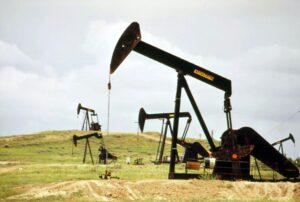Oil and Gas Investment Schemes
Oil and gas investment scams continue to proliferate, especially in times of high oil prices, which draw increased attention to investments in energy-related business ventures. While many oil and gas investment opportunities are legitimate, offering varying degrees of risk to investors and conducting responsible operations, there remains a significant risk of encountering fraudulent activities. Unscrupulous promoters often capitalize on investor interest, engaging in deceptive practices to exploit those looking to invest in this volatile sector.
The allure of high returns during periods of high oil prices can attract not only legitimate business ventures but also con artists who had previously moved on to other industries. With the fluctuating oil prices in recent years, some of these individuals have returned to the oil and gas sector, seeing an opportunity to reintroduce scams. Economic conditions that garner widespread publicity tend to attract both genuine investment opportunities and fraudsters eager to take advantage of investor enthusiasm.
In such a high-risk investment landscape, the importance of attorneys experienced in oil and gas investments becomes clear. These legal professionals are crucial for investors who need guidance navigating the complexities of energy investments and for those who find themselves victims of investment fraud. Attorneys with expertise in this field can provide critical support by investigating the legitimacy of investment offers, ensuring compliance with securities laws, and representing clients in legal actions against fraudulent schemes.
For investors considering oil and gas ventures, consulting with knowledgeable attorneys is essential. These attorneys can conduct due diligence, offer legal advice on potential investments, and help safeguard against scams. Moreover, in cases where investors have fallen prey to fraudulent practices, skilled attorneys can assist in recovering lost funds and holding the fraudulent parties accountable.
Overall, in the dynamic and often precarious market of oil and gas investments, the role of attorneys is invaluable in providing both preventive counsel to avoid scams and aggressive legal representation to address fraud. They ensure that investors can navigate this challenging field with greater security and legal protection.
Oil and gas investments take many forms, including limited partnership interests, ownership of fractional undivided interests in leases, and general partnerships. Tax consequences and investor participation vary according to the type of program.
In a drilling limited partnership, an oil or gas company sells partnership units to investors and uses the money it raises to lease property and drill wells. In return for managing the project, the sponsor company usually takes an upfront fee that averages about 15-16% of one’s investment (commonly referred to as tangible and intangible drilling costs) and also shares in a percentage of any revenue generated. In return, the promoter offers the investor the prospect of a substantial first year tax write-off and quarterly cash distributions from the sale of any oil and gas the partnership finds until the wells run dry.
Drilling partnerships have always been a gamble, but recently, they have proven somewhat riskier than usual. This type of investment is very speculative, is a highly illiquid investment and can have a long holding period.
Fraudulent oil and gas deals are frequently structured with the limited partnership (or other legal entity) in one state, the operation and physical presence of the field in a second state, and the offerings made to prospective investors in states other than the initial two states. Thus there is less chance of an investor dropping by a well site or a nonexistent company headquarters. Such a structure also makes it difficult for law enforcement officials and victims to identify and expose the fraud.
In order to attract the interest of potential investors, unprincipled promoters frequently use the Internet and “boiler room” offices with banks of phones manned by salespeople with little or no background in energy exploration, but plenty of experience in high-pressure sales. Their techniques include repeated unsolicited phone calls to members of the public, hyping the profitability of the deal. Some swindlers use professionally designed brochures.
Some of the following claims are common to the in a typical high-pressure sales pitch, whether through unsolicited telephone calls or e-mail messages:
- You will have an interest in a well that cannot miss;
- The risks are minimal;
- A geologist has given the salesperson a tip;
- The salesperson has personally invested in the venture;
- The promoter has “hit” on every well drilled so far;
- There has been a tremendous “discovery” in an adjacent field;
- A large, reputable oil company is operating or planning to operate in the area;
- Only a few interests remain to be sold and you should immediately send in your money in order to assure the purchase of an interest;
- This is a special private deal open only to a lucky chosen few investors.
Oil and Gas Terms 
Crude Oil: Crude oil is, quite simply, oil in its natural state. It is what is extracted from the ground. Often described as the world’s most important commodity, crude oil is what refineries use to make products such as gas, diesel fuel and kerosene.
Crude oil can be categorized as “light,” “heavy,” “sweet” and “sour.” The latter two are a nod to the days when oil prospectors would actually taste oil to get a sense of its composition. Crude oil that contained less sulfur was considered sweet, while oil with more sulfur tasted sour. Light crude oil has a lower density than heavy crude oil. Light, sweet crude oil is the easiest and cheapest to refine into gasoline and diesel fuel.
Hydraulic Fracturing: Hydraulic fracturing, otherwise known as fracking, has gotten a lot of attention over the last eight years, but the technique has actually been in use since the 1940s. Fracking itself involves pumping water, sand and chemicals into a well to create fractures in rocks that then release crude oil as well as other petroleum products and/or natural gas.
Shale Oil: While hydraulic fracturing has been around for a long time, the recent development of horizontal drilling has allowed U.S. companies to pull oil and natural gas out of previously hard-to-reach shale beds. The new mining technique, which involves angling drill bits to blast through rock horizontally, allows energy companies to tap a much greater underground area for energy resources. With oil being drawn from new shale fields, U.S. crude oil production has soared, reducing U.S. demand for foreign countries’ oil exports.
Oil Sands: These may sound like beaches, but they’re really mixtures of sand, clay, water, and bitumen, which is so viscous that it appears solid at a temperature of 50 degrees Fahrenheit. Some oil from the sands is recovered using the kind of open-pit methods that wouldn’t be out of place in an iron ore mine. In other cases, companies drill horizontal wells and pump steam into the ground to heat the bituminous oil, which in turn allows it to be pumped to the surface. The world’s largest oil sands are in Alberta, Canada.
Barrel (bbl): A unit of volume holding 42 U.S. gallons. Crude oil prices are listed per barrel or bbl — for example, $45/bbl — on commodities exchanges.
Organization of the Petroleum Exporting Countries (OPEC): OPEC is a group of 12 countries that produce about 40 percent of the world’s crude oil. Established in the early 1960s with Saudi Arabia, Iran, Iraq, Kuwait and Venezuela as its founding members, OPEC sought to coordinate oil production and export policies to gain greater influence over oil prices and supply.
Oil and Gas Benchmarks
West Texas Intermediate (WTI): West Texas Intermediate is a light, sweet crude oil produced in the U.S. and delivered to Cushing, Oklahoma, which is the country’s largest oil storage hub and the price settlement point for WTI. It is the oil underlying the New York Mercantile Exchange’s (see below) oil futures contracts.
North Sea Brent: Brent crude oil is oil that comes from the North Sea. The price of Brent crude is used to benchmark the price of most oil. Though it’s considered a sweet crude oil, it is more sour than West Texas Intermediate. It trades on the ICE Futures Europe exchange (see below).
Dubai and Oman Crude: The average price of oil from Dubai and Oman, which both produce sour crude, is used to create a third major oil benchmark that helps to price Middle Eastern crude oil that is exported to Asian markets.
OPEC Basket: The OPEC basket is a benchmark derived from the prices of crude oil produced in OPEC member countries. It’s a weighted average of those prices, which includes blends such as Arab Light of Saudi Arabia, Merey of Venezuela and Bonny Light of Nigeria.
The Exchanges
New York Mercantile Exchange (NYMEX): The New York Mercantile Exchange, part of the larger CME Group, is the world’s largest physical commodities futures exchange. Based in Manhattan, NYMEX is home to the trading of futures and options on energy-based commodities, including oil and natural gas contracts, as well as metals.
Intercontinental Exchange (ICE): The Intercontinental Exchange is a network of exchanges that include all-electronic commodities futures markets such as ICE Futures U.S. and ICE Futures Europe. ICE also owns the New York Stock Exchange, which it purchased in 2013.
Oil and Gas Business 
Master Limited Partnerships (MLPs): Master limited partnerships are publically-traded investment vehicles that pay quarterly distributions to shareholders. MLPs are often used to raise capital to develop infrastructure in the oil and gas sector including pipelines and storage facilities. Unlike corporations, MLPs are taxed as partnerships, offering potential tax advantages to investors.
Offshore Drilling: Offshore drilling refers to the extraction of oil and natural gas from wells drilled into the ocean floor. Under the International Law of the Sea, the area stretching 200 miles from a country’s coastlines is called the Exclusive Economic Zone. Energy companies lease parts of the EEZ from governments for energy development, which is more costly than drilling on land.
Early efforts at offshore drilling were confined to areas with ocean depths of less than 300 feet, but today, wells can be drilled to depths of 10,000 feet or more through floating platforms. In 2013, offshore drilling accounted for some 18 percent of U.S. crude oil production.
Upstream, Midstream and Downstream: These are the three primary categories of activity in the oil industry, and you may hear companies being referred to as “upstream”, “midstream” or “downstream”.
Upstream: Upstream operations are also often called exploration and production companies, or E&P companies. Upstream companies are involved in searching for and locating new oil sources and actually extracting oil from the ground.
Midstream: Extracting oil from the ground (or seabed) is only the first step in its journey to an end-user. Companies that store and transport crude oil from wells to refineries make up the so-called midstream in energy production.
Downstream: In the oil business, the downstream encompasses everything that happens to crude oil after it hits a refinery. Refineries, one of the most important downstream segments, process crude oil into usable petroleum products such as gasoline. Transportation is another important segment – refined products find their way to the companies that will sell them to end-users via pipelines, railways, trucks, and ships. Finally, the downstream also includes the companies that make final sales of refined products, including wholesalers and retail gas stations.
Integrated Companies: Vertically integrated companies that take care of upstream, midstream, and downstream operations all under one roof are known as integrated oil companies.
Why Investment Fraud Attorneys at Bakhtiari & Harrison?

If you believe you’ve been a victim of investment fraud, it’s important to act quickly. The sooner you take steps to address the fraud, the better your chances of recovering your losses through FINRA arbitration. At Bakhtiari & Harrison, we are committed to helping victims of investment fraud hold those responsible accountable. Contact us today to discuss your case and explore your legal options. We’re here to help you take the next step in your recovery.
